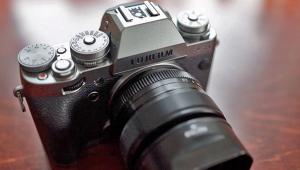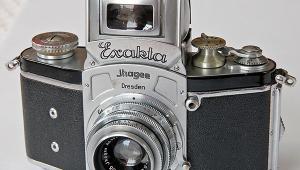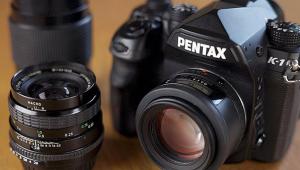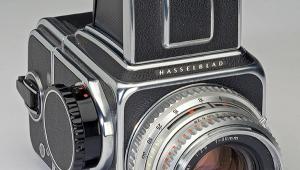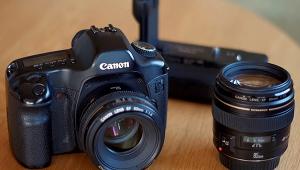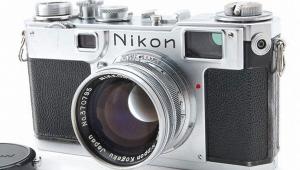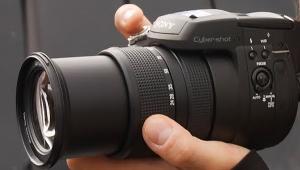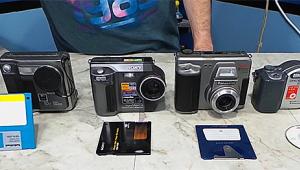Tokyo’s Used Camera Show 2006; Rare And Collectible Showcase
Tokyo, Japan--Ginza is Tokyo's Fifth Avenue. Cartier, Chaumet, Dior, Hermes, Tiffany, Harry Winston, and all the other flamboyant luxury stores are there. Department stores are there as well, but unlike their counterparts in the Western world, they are quality shops with many chauffeur-driven limousines in the parking lot. One of the most fashionable department stores is Matsuya. Established in 1869, Matsuya is otherwise crowded by dressed-up ladies, but it was a different crowd who surged through its exhibition hall in late winter this year for the annual Used Camera Show of the World. The show, which this year attracted some 20,000 mostly male visitors, started 30 years ago and is sponsored by the ICS, or Import Camera Society. The group was organized in 1974 by 20 big used camera stores, and is now the biggest used camera event in Japan.
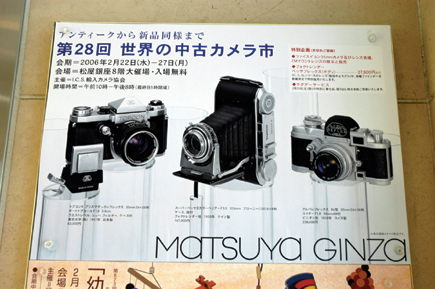 |
|
|
The appeal of used cameras here seems to have never decreased, with almost 10 percent visitor growth over last year. At times there were so many visitors that it was nearly impossible to see the cameras in the showcases without shoving through the crowd. The sales figures also show a slight increase over last year. As Shutterbug readers know, the last year has witnessed the departure of a number of companies from the film camera business, but the popularity of film cameras, especially used cameras, in Japan seems to remain strong. Among the 20 used camera stores that participated in this show there was only one store displaying used digital cameras, and this store sold only six digital cameras during the entire show.
Strong Prices For Foreign Cameras
As might be expected, the best-selling foreign cameras were Leicas. Approximately 80 percent of the Leica bodies sold this year were M series, 20 percent being Barnack type. In Leica lenses, 70 percent were with M bayonet and 30 percent screwmount.
 |
|
|
The best-selling M bodies were M3s, with prices ranging from $1440-$2200; M6 bodies went for about $1100 on average. The prices of all Leica bodies remain strong, with no decline from last year. The same goes for Leica lenses, like the Summicron 50mm f/2 white (old type, $760-$1020), black (new type, $500-$850), and Summilux 50mm f/1.4 (around $1100 on average).
Leica SLRs are not very popular, among which the R6.2 and R7 are selling better than R8 or R9.
The second best sellers next to Leicas are Rollei TLRs, some 70 percent with Planar lenses costing from $1450-$2840, and 30 percent with Xenotar lenses, which cost $1200-$2400. Rollei SLRs are not so popular, what with the reported high repair costs on models such as the SL2000F and 3003. Hasselblad's SW, SWC, and SWC/M are not bad sellers either, although the prices have come down in the last three years to an average of $2900 for the SWC and $3500 for the SWC/M. Other good sellers are small 35mm rangefinder compact cameras like the Retina and Contessa, and, though less popular, Voigtländer's Vitomatic and Vito.
 |
|
|
Nikon Strong Among Domestic Cameras
The Nikon FMA, which has now been discontinued, went for a relatively high price, ranging from $500-$850, and a new one in the original box often costs higher than the regular retail price, all due to scarcity. The FM2 is influenced by this up trend and ranged from $340-$600. Other good sellers in the Nikon brand were the AF80D and AF100. Mint rangefinder Nikons are now almost impossible to find and command very high prices, if they can be found.
- Log in or register to post comments
